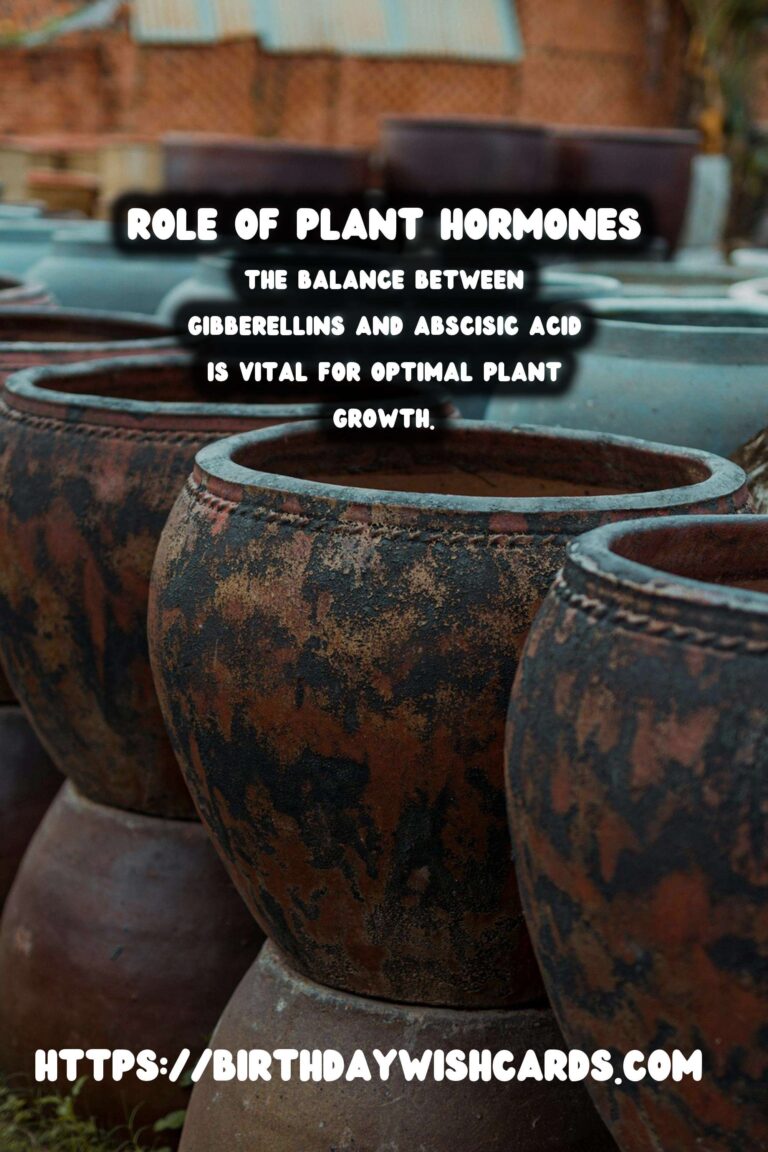
Plant hormones are crucial for the growth, development, and overall functioning of plants. Among these, gibberellins and abscisic acid play significant roles in various physiological processes. Understanding these hormones can provide insights into plant biology and how they adapt to their environments.
What are Gibberellins?
Gibberellins are a group of plant hormones that stimulate growth and influence various developmental processes, including stem elongation, germination, and flowering. They are mainly produced in the plant’s young leaves, seeds, and roots.
Functions of Gibberellins
Gibberellins are involved in breaking seed dormancy and promoting germination. They activate enzymes that mobilize nutrient reserves stored in seeds, providing energy for the growth of young seedlings. Additionally, gibberellins play a role in stem elongation by promoting cell division and elongation.
Another critical function of gibberellins is the promotion of flowering and fruit development. They can induce flowering in some plants, particularly those that require specific environmental conditions to bloom. In fruit development, gibberellins help in the growth of the fruit and can influence the timing of ripening.
What is Abscisic Acid?
Abscisic acid (ABA) is another essential plant hormone that primarily functions in stress responses and the regulation of plant growth. It is synthesized in the plastids of plant cells and plays a vital role in plant adaptation to environmental stressors such as drought and high salinity.
Functions of Abscisic Acid
Abscisic acid is instrumental in plant stress responses. It assists in closing stomata to reduce water loss during periods of drought. This hormone also helps in maintaining seed dormancy by inhibiting germination until conditions are favorable for growth.
In addition to stress responses, abscisic acid regulates various growth processes. It acts as a growth inhibitor, balancing the effects of growth-promoting hormones like gibberellins. This balance is crucial for the proper development and timing of growth phases in plants.
Interaction Between Gibberellins and Abscisic Acid
The interaction between gibberellins and abscisic acid is a classic example of the hormonal balance required for plant growth and development. While gibberellins promote growth, abscisic acid often acts as a counterbalance to regulate and moderate these effects, ensuring that growth occurs under optimal conditions.
For instance, during seed germination, gibberellins promote the process, whereas abscisic acid maintains dormancy. The balance between these two hormones determines the timing of germination, allowing seeds to sprout when environmental conditions are suitable.
The Importance of Understanding Plant Hormones
Understanding plant hormones like gibberellins and abscisic acid is crucial for agricultural practices and plant breeding. By manipulating these hormones, farmers and scientists can improve crop yields, enhance stress resistance, and develop plants that are better suited to changing climates.
Moreover, this knowledge can lead to innovations in biotechnology, such as creating plants with tailored growth cycles or enhanced nutritional profiles. As we continue to explore the complexities of plant hormones, we open the door to sustainable agricultural practices that can meet the demands of a growing global population.
Conclusion
Gibberellins and abscisic acid are vital components of the intricate hormonal network that governs plant growth and development. Their interplay highlights the complexity of plant biology and the sophisticated mechanisms that plants use to adapt to their environments. By furthering our understanding of these hormones, we can harness their potential to improve plant health and agricultural productivity.
Plant hormones like gibberellins and abscisic acid play significant roles in plant growth and development. Gibberellins are crucial for stem elongation, seed germination, and flowering. Abscisic acid is essential for stress responses and maintaining seed dormancy. The balance between gibberellins and abscisic acid is vital for optimal plant growth. Understanding these hormones can lead to improved agricultural practices and plant breeding.
#PlantHormones #Gibberellins #AbscisicAcid #Botany #PlantBiology

